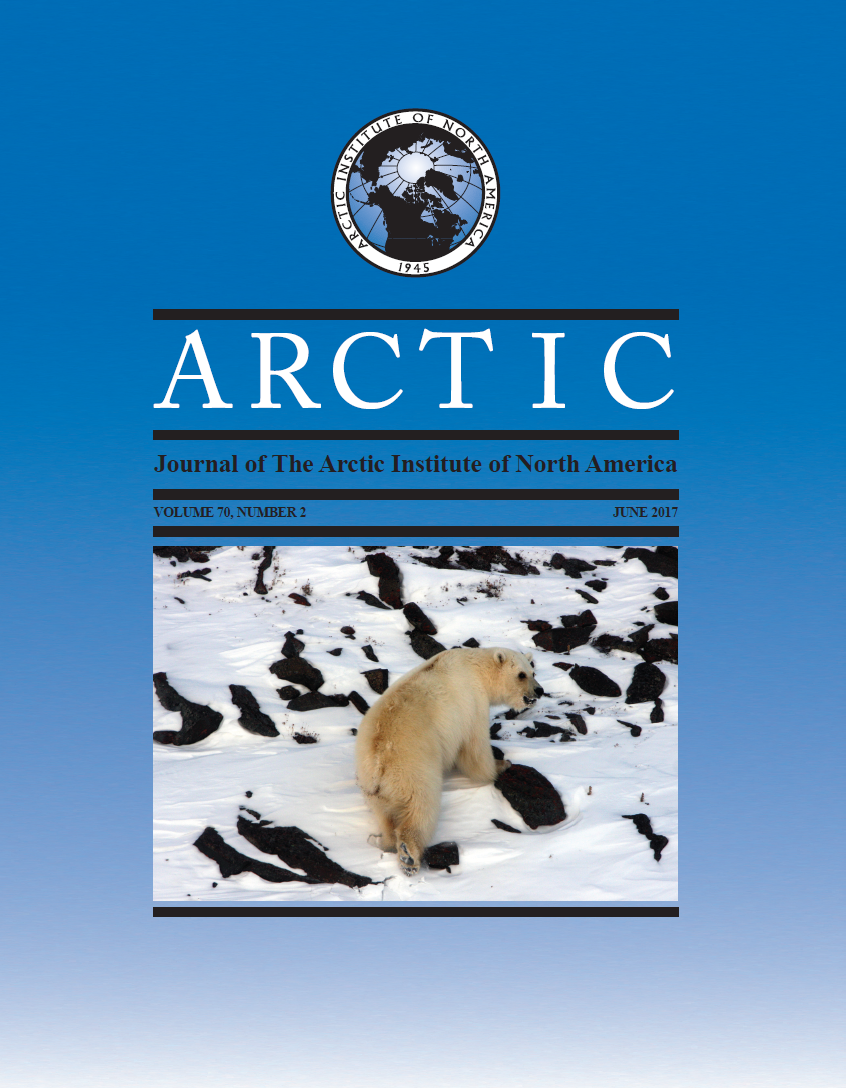Movements and Inferred Foraging by Bowhead Whales in the Canadian Beaufort Sea during August and September, 2006–12
DOI:
https://doi.org/10.14430/arctic4648Ключевые слова:
bowhead whale, aggregation areas, Beaufort Sea, Amundsen Gulf, Viscount Melville Sound, Darnley Bay, inferred foraging, Balaena mysticetus, satellite-linked telemetryАннотация
Each spring, most bowhead whales of the Bering-Chukchi-Beaufort (BCB) population migrate to the southeast Beaufort Sea and summer in Canadian waters. In August and September, they form aggregations, which are known to occur mainly in the shallow, shelf waters when oceanographic conditions promote concentration of their zooplankton prey. The movements of individual bowheads while they occupy these late summer habitats are less well known; our knowledge is based on photographic evidence and limited tagging studies conducted from 1982 to 2000. In this study, 85% (17) of the 20 satellite-tagged whales that could have spent some time in the Canadian portion of the Beaufort Sea during late summer 2006 to 2012 spent all or part of August and September there. We analyzed location data for 16 whales, using a two-state switching correlated random walk (CRW) behavioural model, and classified locations in the Canadian waters as associated with lingering behaviour (inferred foraging) or directed travel. We found that these whales spent the greatest proportion of their time lingering (59%), followed by traveling (22%), and transitioning between lingering and traveling (19%). Using only lingering locations for these tagged whales in all study years pooled, we calculated kernel densities and defined five areas within the 75% density contour as aggregation areas. Together, the five aggregation areas we defined comprised 25 341 km2, 14.1% of the total area used by these tagged whales in Canadian waters during August and September of the deployment years. Three aggregation areas were located in shallow waters of the Beaufort Sea Shelf and were used almost exclusively by immature tagged whales in our sample. Two other aggregation areas were observed, one in Darnley Bay and one in Viscount Melville Sound in the Canadian Arctic Archipelago. Each of these was used by one mature whale. Tagged whales were observed to use one or two aggregation areas in a single season, and rarely more. The proportion of lingering time spent in each aggregation area was highly variable among individuals. The largest aggregation area (10 877 km2), located over the Beaufort Shelf north of the Tuktoyaktuk Peninsula (5 – 52 m depth), was used by 13 of the 16 tagged whales, almost exclusively by the immature whales, including three of four that were tracked in two consecutive summers. The Beaufort Shelf overall (and possibly the Tuktoyaktuk Shelf, including the Outer Shelf, in particular) was especially important for immature bowhead whales, while mature whales used habitats beyond the Beaufort Shelf during late summer. Findings may be important to inform both decisions on management and mitigative actions relating to bowhead whale use of the Beaufort Shelf and studies that aim to improve our understanding of the prey base of BCB bowhead whales in the Canadian Beaufort Sea region.


